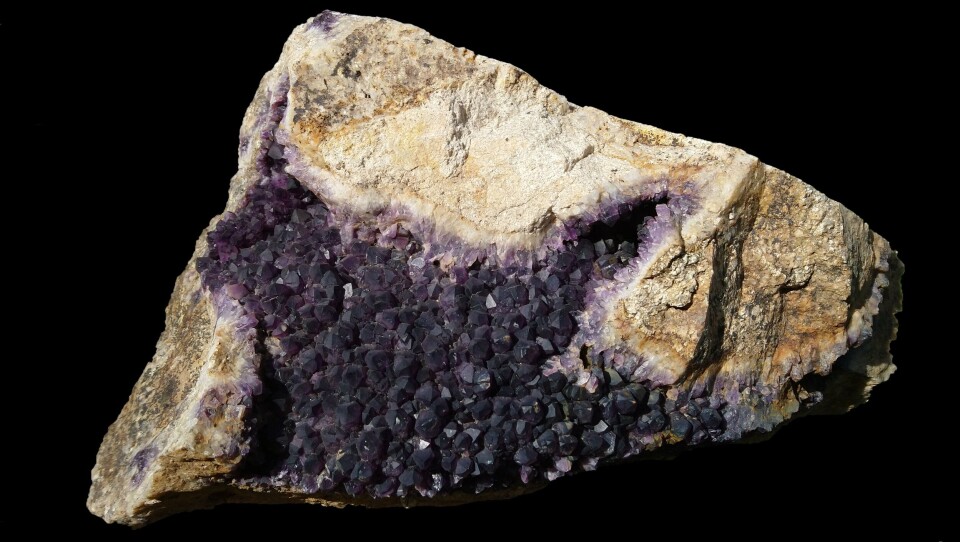-
Workers in France can take 17-day break using only eight days of leave in 2026
Favourable calendar for public holidays makes extended May break possible, with five guaranteed long weekends throughout year
-
Many of France’s chambres d’hôtes face closure under 2026 tax and social charge changes
Measures designed to curb Airbnb-style lets are set to hit traditional B&Bs particularly hard
-
I became a professional upholsterer after moving to France
Jo MacDonald, 59, describes how she monetised her hobby in Gers
Hope for French amethyst industry as friends open mine
The pair believe there are more gemstones in the ground despite serious efforts to uncover them ending a century ago

Two friends are hoping to revive France’s near-extinct amethyst industry by mining gemstones in their own quarry.
Their bid to reopen an abandoned amethyst site in central France is being considered by French authorities.
Boom and bust
France has a long history of amethyst production, with the earliest written records dating from the 16th century.
Mathieu Moulin, 31, one of the founders of the Cominauv company with Nicolas Léger, 44, said: “It has always followed a pattern of boom and bust, and the last bust, around 100 years ago, resulted in what seemed to be the effective end of the industry.
“There is one small mine [left in France], operated single-handed by an enthusiast who sells his stones in his own shop, but we are convinced there are still lots of amethysts in the ground.”
How French amethysts differ
Amethysts are crystal stones, which vary in colour from a pale lavender to a dark purple. They are found in many places around the world, with Brazil now being the global leader in amethyst production.
“French amethysts, especially those in the Auvergne region, were formed by the pressure between two blocks of granite as they ground against each other and were heated by volcanos,” said Mr Moulin.
“In Brazil, they were mainly formed from pockets of gas that got trapped in the rock. Ours have a different density, which makes them easier to work with, and have a deep violet and purple colour, which in the past meant they were highly sought-after for gems, as purple is traditionally the colour of Roman emperors and monarchs.”
Mining permit
The friends have bought an old, three-hectare quarry in Puy de Dôme which was last used 100 years ago, and are convinced they will be able to create a viable business if they receive authorisation from the state to exploit it.
French law says that all minerals in the earth are its property and they can be mined only with state permission.
“Getting a mining or quarry permit is fairly straightforward if you know what you are doing, but it takes time,” said Mr Moulin.
“Once we were sure we were going ahead, we spent a couple of months getting the file together and then submitted it at the start of 2022.
“At best, it will be the end of the year or 2023 before we get the go-ahead.”
Working by hand
The quarry is on a bed of granite. The friends have found a pipe of amethyst around two metres high, which radar shows goes down at least 23m.
“Only a very small proportion, maybe 15%, of this will be of high enough quality to sell as cut and polished stone or in sheets to make things like carved cups or decoration in furniture,” said Mr Moulin.
“But there are now lots of other outlets, such as amethyst gravel for paths, which did not exist when the quarry was last worked.
“We are also hopeful of finding and shaping amethyst specimens that practitioners of crystal therapy can use.”
To extract the stone, mechanical diggers will be used to clear around the amethyst pipe. This granite will either be ground down for building sand or turned into gravel for road surfaces and concrete.
The exposed amethyst pipe will then be worked on by hand, using hammers and chisels, because the stone is too fragile to risk using machines.
Related articles
French crafts in focus: The art of cutting gems
Rare gems found near Mont-Blanc shared with French town of Chamonix
France pays €10,000 compensation to 700 former miners for anxiety
























